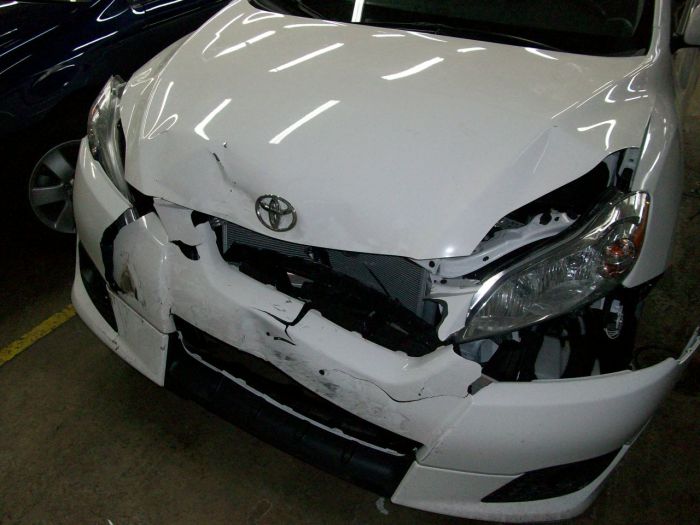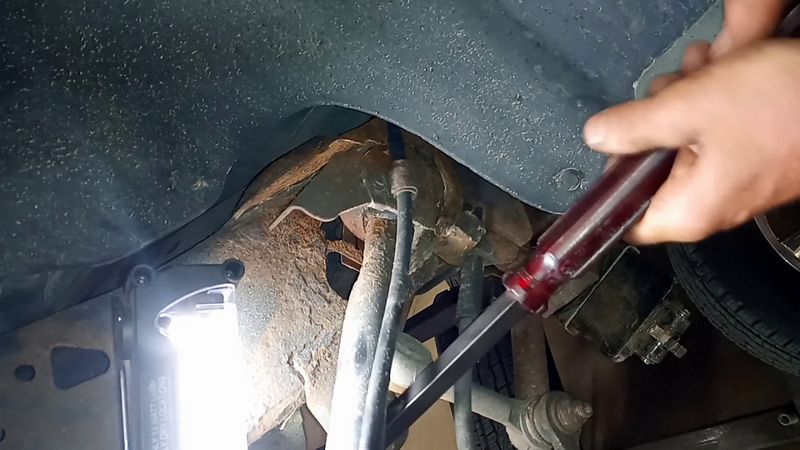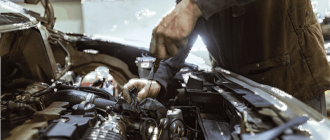
Damaged Frame? Here’s Our Guide On What To Do Next
Discovering a damaged frame can be a real headache. Whether it happened due to an accident, wear and tear, or other unforeseen circumstances, it’s important to know what steps to take next. Our guide is here to help you navigate through this situation and make the best decisions for your frame and overall safety.
Assess the damage – The first thing to do is to carefully inspect the frame for any visible signs of damage. Look for cracks, bends, or any other abnormalities that might compromise the structure. It’s essential to gauge the severity of the damage in order to determine the appropriate course of action.
Document the damage – Before proceeding with any repairs or replacements, it’s crucial to document the damage. Take clear, detailed photographs of the affected areas from multiple angles. This visual evidence will be invaluable when dealing with insurance claims or when seeking professional assistance.
Get professional advice – Depending on the extent of the damage, it may be necessary to consult a professional. Reach out to reputable framers or auto body shops and schedule an appointment for an assessment. They will be able to provide expert advice and guidance on the best course of action, whether that involves repairs or a complete replacement.
Consider your budget and time constraints – When deciding what to do next, it’s crucial to consider your budget and any time constraints you may have. Repairs may be a more cost-effective solution, but they could also take longer to complete. On the other hand, a full replacement might be more expensive upfront, but it could save you money in the long run by ensuring a durable and safe frame.
Make an informed decision – Armed with all the information from your assessment and professional advice, it’s time to make an informed decision. Evaluate the pros and cons of each option, taking into account factors such as cost, time, and overall safety. Ultimately, your decision should prioritize your well-being and the long-term durability of your frame.
In conclusion, discovering a damaged frame can be overwhelming, but following these steps will help you navigate through this situation. Remember to assess the damage, document it, seek professional advice, consider your budget and time constraints, and ultimately make an informed decision. By approaching the situation wisely, you’ll be able to ensure the safety and longevity of your frame.
Assess the Damage
If you have a damaged frame, it’s important to assess the extent of the damage before deciding what to do next. Here are some steps you can take to evaluate the situation:
- Inspect the frame: Carefully examine the frame to identify any visible damage. Look for signs of cracks, dents, or bent areas.
- Assess structural integrity: Determine if the damage has compromised the structural integrity of the frame. This can be done by checking for any loose or weakened connections.
- Consider the type of damage: Different types of damage may require different solutions. For example, if there are small cracks, they may be repairable, but if there are extensive fractures, you may need to consider replacing the frame.
- Consult a professional: If you are uncertain about the severity of the damage or how to proceed, it is advisable to seek the opinion of a professional frame repair specialist. They can provide expert advice based on their knowledge and experience.
Assessing the damage is an essential step in determining what to do next. By thoroughly evaluating the condition of your damaged frame, you can make an informed decision about the best course of action to take, whether it’s repairing, replacing, or seeking professional help.
Contact Professionals
If your frame is damaged and you are not sure how to proceed, it is always best to contact professionals for assistance. They have the knowledge and expertise to assess the extent of the damage and provide you with the most suitable solutions.
When reaching out to professionals, be prepared to provide information about the type of frame you have, the specific damage it has sustained, and any other relevant details. This will help them better understand your situation and offer you appropriate advice or services.
There are various types of professionals you can contact, depending on the severity of the damage and your specific needs. Some options include:
- Framers: These professionals specialize in framing and can provide repair services for damaged frames. They may be able to fix minor damages or recommend replacement options.
- Restoration specialists: If you have an antique or valuable frame that requires special care, restoration specialists can help. They have expertise in preserving and repairing delicate frames.
- Art conservators: For valuable artworks with damaged frames, art conservators can assess and repair the frame while ensuring the preservation of the artwork.
When contacting professionals, make sure to inquire about their qualifications, experience, and any certifications they may have. It is also recommended to request references or examples of their previous work to ensure their competence.
Remember that professionals can provide you with valuable guidance and assistance in dealing with your damaged frame. It is always better to seek their help rather than attempting to fix the frame yourself, especially if you are unsure of the proper techniques and materials to use.
Document the Damage
When it comes to dealing with a damaged frame, one of the first things you should do is document the extent of the damage. This will not only help you understand the severity of the issue, but it will also provide important information for insurance claims and repair purposes.
Here are some steps to follow when documenting the damage:
- Take photos: Use your smartphone or camera to capture clear images of the damaged frame from different angles. Make sure to highlight any cracks, dents, or other visible signs of damage. This visual evidence will be useful when discussing the issue with professionals or insurers.
- Write a detailed description: While the photos are important, it’s also crucial to provide a written description of the damage. Include information such as the location of the damage, the size and shape of the affected area, and any other relevant details. This will help ensure that nothing is missed or overlooked.
- Measure the damage: Use a tape measure or ruler to accurately measure the dimensions of the damaged area. Note down these measurements in your documentation. This information will be useful when discussing repair options or ordering replacement parts.
- Collect additional evidence: If there are any loose or broken pieces of the frame, collect and keep them. These pieces may be important for identification or restoration purposes. Store them in a safe place until you can consult with a professional.
By documenting the damage in detail, you will have a comprehensive record of the issue, making it easier to communicate with professionals and navigate the repair process. This documentation will also be valuable for insurance purposes, ensuring that you have the necessary evidence to support your claim.
File an Insurance Claim
If your frame is damaged, it’s important to file an insurance claim as soon as possible. This will help you get the support you need to repair or replace your damaged frame.
Here’s what you can do next:
- Assess the damage: Take a close look at your frame to determine the extent of the damage. Note any visible cracks, scratches, or dents.
- Contact your insurance provider: Reach out to your insurance company and inform them about the damaged frame. Be prepared to provide details about the incident that caused the damage.
- File a claim: Follow your insurance company’s instructions to file a claim. This may involve filling out a claims form and providing supporting documentation, such as photos of the damage.
- Provide necessary information: Make sure to provide accurate and detailed information about the damaged frame, including its make, model, and age. This will help the insurance company assess the value of the frame and determine the appropriate coverage.
- Cooperate with the insurance company: Throughout the claims process, be cooperative and responsive to any requests or inquiries from your insurance company. This will help expedite the resolution of your claim.
- Review the claim decision: Once your insurance company has reviewed your claim, they will provide a decision. This could involve approving the claim, denying the claim, or requesting additional information. Carefully review the decision and seek clarification if needed.
- Begin repairs or replacement: If your claim is approved, you can start the process of repairing or replacing your damaged frame. Follow the instructions provided by your insurance company to ensure a smooth and timely resolution.
Filing an insurance claim for a damaged frame can be a straightforward process if you follow the necessary steps and provide the required information. Remember to keep copies of any communication with your insurance company for your records.
Consider Repair Options
If you have a damaged frame, it’s important to consider your repair options. Here’s our guide on what to do next:
- Assess the damage: Start by closely inspecting the frame for any visible cracks, dents, or structural weaknesses. Take note of the extent of the damage.
- Consult a professional: It’s always recommended to seek advice from a reputable frame repair specialist. They will assess the damage, provide an estimate for repairs, and advise on the best course of action.
- Evaluate the cost: Depending on the severity of the damage, repair costs may vary. Consider the value of the frame and weigh it against the cost of repairs. Sometimes, it may be more cost-effective to replace the frame rather than repair it.
- Explore DIY options: If you are skilled in frame repair or have experience with woodworking, you may choose to attempt the repairs yourself. However, it’s important to proceed with caution, as improper repairs can further damage the frame.
- Gather necessary materials and tools: If you decide to go the DIY route, make sure you have the proper tools and materials for the repairs. This may include wood glue, clamps, sandpaper, and a suitable filler for cracks and dents.
- Follow a step-by-step repair guide: To ensure a successful repair, follow a detailed repair guide that provides step-by-step instructions. This will help you navigate the repair process and minimize the risk of mistakes.
- Consider professional restoration: If the frame holds significant sentimental or historical value, you may want to consider professional restoration instead of regular repairs. Restoration specialists can retain the original character of the frame while ensuring its structural integrity.
Ultimately, the best repair option will depend on the extent of the damage, your budget, and your personal preferences. Make sure to weigh all the factors before deciding on the next steps for your damaged frame.
Look for Temporary Solutions
If your frame is damaged, it’s essential to address the issue as soon as possible to prevent further damage or accidents. While waiting for professional help or repairs, here are some temporary solutions you can consider:
- Assess the damage: Before trying any temporary solutions, make sure to assess the extent of the damage. This will give you a better understanding of the necessary steps to take.
- Stabilize the frame: If you notice any loose or wobbly parts, you can use tools like clamps or braces to stabilize the frame and prevent further shifting or movement.
- Protect the damaged area: To prevent any additional damage or injuries, you can use materials like tape or adhesive to cover sharp edges or exposed areas.
- Reinforce with temporary support: In case of severe damage, you can consider using temporary support structures to provide additional stability to the frame. This can include using wooden or metal beams to reinforce weak areas temporarily.
- Minimize use: If possible, try to limit the use of the damaged frame until proper repairs can be done. This will help prevent the situation from getting worse.

Remember, these temporary solutions are not meant to be long-term fixes. It’s still crucial to seek professional help and get the necessary repairs done to ensure the safety and functionality of your frame.
Protect the Frame from Further Damage
If you have a damaged frame, it’s important to take immediate action to protect it from any further damage. Here’s what you can do:
- Assess the damage: Take a close look at the frame to determine the extent of the damage. Look for any cracks, dents, or deformities.
- Remove any loose parts: If there are any loose parts on the frame, such as broken pieces or detached elements, carefully remove them to prevent further damage.
- Secure the frame: Use adhesive or tape to secure any loose parts that cannot be removed. This will help prevent them from causing additional damage.
- Avoid additional stress: If possible, avoid putting any additional stress on the damaged frame. This includes avoiding heavy loads or impacts that could further weaken the structure.
- Keep it clean: Regularly clean the frame to prevent dirt, moisture, or other contaminants from causing additional damage. Use a soft cloth or brush to gently remove any debris.
- Seek professional assistance: If the damage to the frame is severe or if you are unsure how to proceed, it’s best to seek professional assistance. A professional can assess the damage and recommend appropriate repairs or replacements.
By following these steps, you can help protect your damaged frame from further deterioration and increase its chances of being repaired.
Consider Safety Precautions
If you have a damaged frame, it’s important to prioritize your safety before taking any action. Here are some safety precautions to consider:
- Assess the damage: Take a close look at the frame and surrounding area to identify the extent of the damage. Look for any signs of structural instability or sharp edges that could pose a risk.
- Secure the area: If the damaged frame is in a public or high-traffic area, make sure to cordon off the area or put up warning signs to prevent accidents.
- Use personal protective equipment (PPE): Put on gloves, safety goggles, and other necessary protective gear before attempting to handle the damaged frame. This will help prevent injuries from sharp edges or debris.
- Work with a partner: If possible, have someone else assist you when dealing with a damaged frame. They can help provide support or call for help in case of an emergency.
- Follow proper lifting techniques: If you need to move the damaged frame, make sure to use proper lifting techniques to avoid straining your back or causing further damage.
Remember, safety should always be your top priority when dealing with a damaged frame. Taking these precautions will help ensure your well-being and prevent any further accidents.
Research Repair Cost
Once you have assessed the damage to your frame, the next step is to research the repair cost. This will give you an idea of how much you can expect to spend on fixing your damaged frame.
Here’s our guide on what to do next:
- Get estimates from multiple repair shops: Contact several different repair shops in your area to get quotes for the frame repair.
- Compare prices: Once you have received the estimates, compare the prices to see which shop offers the most competitive rates.
- Consider the reputation: In addition to the cost, it’s important to consider the reputation of the repair shop. Look for online reviews or ask for recommendations from friends and family.
- Ask about warranties: Inquire about any warranties or guarantees offered by the repair shop. This will ensure that you are protected in case any issues arise after the repair.
- Discuss the repair process: Talk to the repair shop about their repair process and ask any questions you may have. It’s important to understand how they plan to fix your damaged frame.
- Factor in additional costs: Keep in mind that there may be additional costs involved, such as replacement parts or painting. Make sure to inquire about these costs upfront.
- Make an informed decision: Based on the estimates, reputation, warranties, and repair process, make an informed decision on which repair shop to choose.
By following these steps, you can research the repair cost for your damaged frame and make a well-informed decision on the best way to proceed.
Reschedule Upcoming Events
If your frame is damaged, it may be necessary to reschedule any upcoming events you have planned. Here’s our guide on what to do next:
- Assess the damage: Before making any decisions, take the time to assess the extent of the damage to your frame. This will help you determine whether rescheduling is necessary.
- Contact the venue: Reach out to the venue where your event was scheduled to take place. Explain the situation and inquire about their rescheduling policy. They may have specific guidelines in place for damaged frames.
- Check availability: Once you have been in touch with the venue, check their availability for rescheduling your event. It’s important to choose a date and time that works for both you and the venue.
- Notify participants: Inform all participants of the event about the need to reschedule. Provide them with the new date and any other relevant details. It’s important to keep everyone informed and updated.
- Review contracts and agreements: Take a look at any contracts or agreements you have in place with vendors or collaborators for the event. Make sure to understand their rescheduling policies and discuss any changes or adjustments that may need to be made.
- Update announcements and invitations: If you have already sent out announcements or invitations for the event, make sure to update them with the new date and time. This will help avoid any confusion or miscommunication.
- Prepare for the rescheduled event: Once the new date is confirmed and all participants have been notified, start making the necessary preparations for the rescheduled event. This may include confirming vendors, reorganizing logistics, and adjusting any relevant plans.
By following these steps, you can effectively reschedule your upcoming event in light of the damaged frame. Remember to communicate openly with all parties involved to ensure a smooth transition and minimize any disruption caused by the situation.
Find Alternative Transportation
If your frame is damaged and you cannot safely drive your vehicle, it is important to find alternative transportation. Here are some options to consider:
- Ride-sharing: Use apps such as Uber or Lyft to book a ride with a driver in your area. This can be a convenient and affordable option.
- Public transportation: Check your local public transportation options, such as buses or trains, to see if they can take you to your desired destination.
- Rental car: Consider renting a car temporarily until your own vehicle is repaired. Many rental car companies offer daily or weekly rentals.
- Borrow from a friend or family member: If possible, ask someone you know if you can borrow their vehicle for a short period of time.
- Bicycle or walking: If your destination is nearby, consider using alternative methods of transportation such as walking or cycling.
No matter which option you choose, be sure to consider the cost, convenience, and availability before making a decision. Remember to arrange alternative transportation as soon as possible so that you can continue with your daily activities while your damaged frame is being addressed.
Learn How to Prevent Future Damage
To prevent future damage to your frame, follow these steps:
- Inspect Regularly: Regularly inspect your frame for any signs of damage or wear. Look for cracks, dents, or bends in the frame. Catching these issues early can help prevent further damage.
- Handle with Care: Be careful when handling your frame to avoid dropping or mishandling it. Take extra precautions when transporting or storing the frame to prevent accidental damage.
- Use Protective Equipment: When using your frame for activities that may cause damage, such as cycling or off-roading, consider using protective equipment such as frame protectors or guards.
- Secure Properly: When mounting your frame onto a surface or attaching accessories, ensure that it is securely fastened. Loose or improperly secured frames can be more prone to damage.
- Avoid Extreme Conditions: Exposure to extreme temperatures, humidity, or other environmental conditions can weaken the frame over time. Store your frame in a cool, dry place and avoid extended exposure to extreme conditions.
- Follow Maintenance Recommendations: Consult the manufacturer’s recommendations for maintenance and care of your specific frame. They may provide guidance on cleaning, lubrication, or other maintenance tasks that can help prevent damage.
- Replace Worn Components: Regularly inspect and replace any worn or damaged components of your frame, such as bolts or brackets. Using worn-out parts can put additional strain on the frame and increase the risk of damage.
By following these guidelines, you can help minimize the risk of future damage to your frame and keep it in optimal condition for longer.
Q&A:
What should I do if I notice a damaged frame on my car?
If you notice a damaged frame on your car, it is important to take immediate action. The first step is to assess the extent of the damage and determine if it is safe to drive the vehicle. If the damage is minor and does not affect the structural integrity of the car, you may be able to continue driving. However, it is recommended to have the frame inspected by a professional to ensure there are no hidden damages. If the damage is significant and poses a risk to your safety, it is best to have the car towed to a trusted auto repair shop.
Can a damaged frame be repaired?
Yes, a damaged frame can be repaired. However, the extent of the damage will determine whether it is feasible to repair the frame or if it needs to be replaced. Minor damages, such as small dents or bends, can often be fixed using specialized tools and techniques. However, if the damage is severe or has compromised the structural integrity of the frame, it may need to be replaced entirely. It is best to consult with a professional auto body technician who can assess the damage and recommend the appropriate course of action.
How much does it cost to repair a damaged frame?
The cost to repair a damaged frame can vary depending on several factors, such as the extent of the damage, the make and model of the car, and the labor rates of the auto repair shop. Minor damages may cost a few hundred dollars to repair, while more extensive damages can cost several thousand dollars. In some cases, if the frame is severely damaged, it may be more cost-effective to replace the frame entirely. It is best to get multiple quotes from reputable auto repair shops to determine the average cost of the repairs.
Will insurance cover the cost of repairing a damaged frame?
Whether insurance will cover the cost of repairing a damaged frame depends on the circumstances and the type of insurance policy you have. If the damage was caused by a covered event, such as an accident or vandalism, and you have comprehensive or collision coverage, your insurance may cover the cost of repairs. However, you will likely still be responsible for paying the deductible. It is important to review your insurance policy or contact your insurance provider to understand what is covered and what your financial obligations will be.





